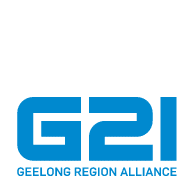Regional Renewable Organics Network – a big step forward for G21’s circular economy
Barwon Water has joined forces with six local councils to transform food, garden and commercial organic waste into clean energy and nutrient-rich products for agriculture, in a big step forward for the circular economy in our region and Victoria.
The project has received support from the Victorian Government with funding for a business case, and Barwon Water has signed a Heads of Agreement with Colac Otway, Greater Geelong, Golden Plains, Queenscliffe, Surf Coast and Wyndham Councils to explore opportunities for a Regional Renewable Organics Network (RON) at its Black Rock Water Reclamation Plant in Connewarre.
The Regional RON, which is a G21 priority under the Clean Energy, Cleantech & Circular Economy project, will deliver significant environmental, economic and community benefits for the region.
Local councils will be able to send 40,000 tonnes of commercial, industrial and household organic waste to Barwon Water every year, where it will be processed into 8000 tonnes of nutrient-rich compost to support local agriculture. Greenhouse gas emissions captured from rotting waste will be converted into clean energy.
This will generate enough renewable electricity to power the equivalent of 500 homes and reduce the region’s carbon emissions by between 10,000 to 15,000 tonnes, the equivalent of taking more than 4,000 cars off the road.
It will provide a lower cost, environmentally positive waste solution for councils and ratepayers, while cutting Barwon Water’s energy costs by helping to power the Black Rock Water Reclamation Plant.
The Regional RON will lead our region’s transition to a circular economy where materials are continually reused and recycled to increase their lifespan, add value and reduce waste.
The facility will operate under the same clean energy principles as the RON at Barwon Water’s Colac Water Reclamation Plant, which converts gas produced by organic matter into renewable electricity.
The Colac RON, created in partnership with Australian Lamb Company and Bulla Dairy Foods, powers itself and is no longer on the grid, saving money and reducing carbon emissions.
The Regional RON will be up and running by mid-2024.
Barwon Water is inviting the community to learn more about the project and provide input into early stages of the project’s design at https://www.yoursay.barwonwater.vic.gov.au/rron











